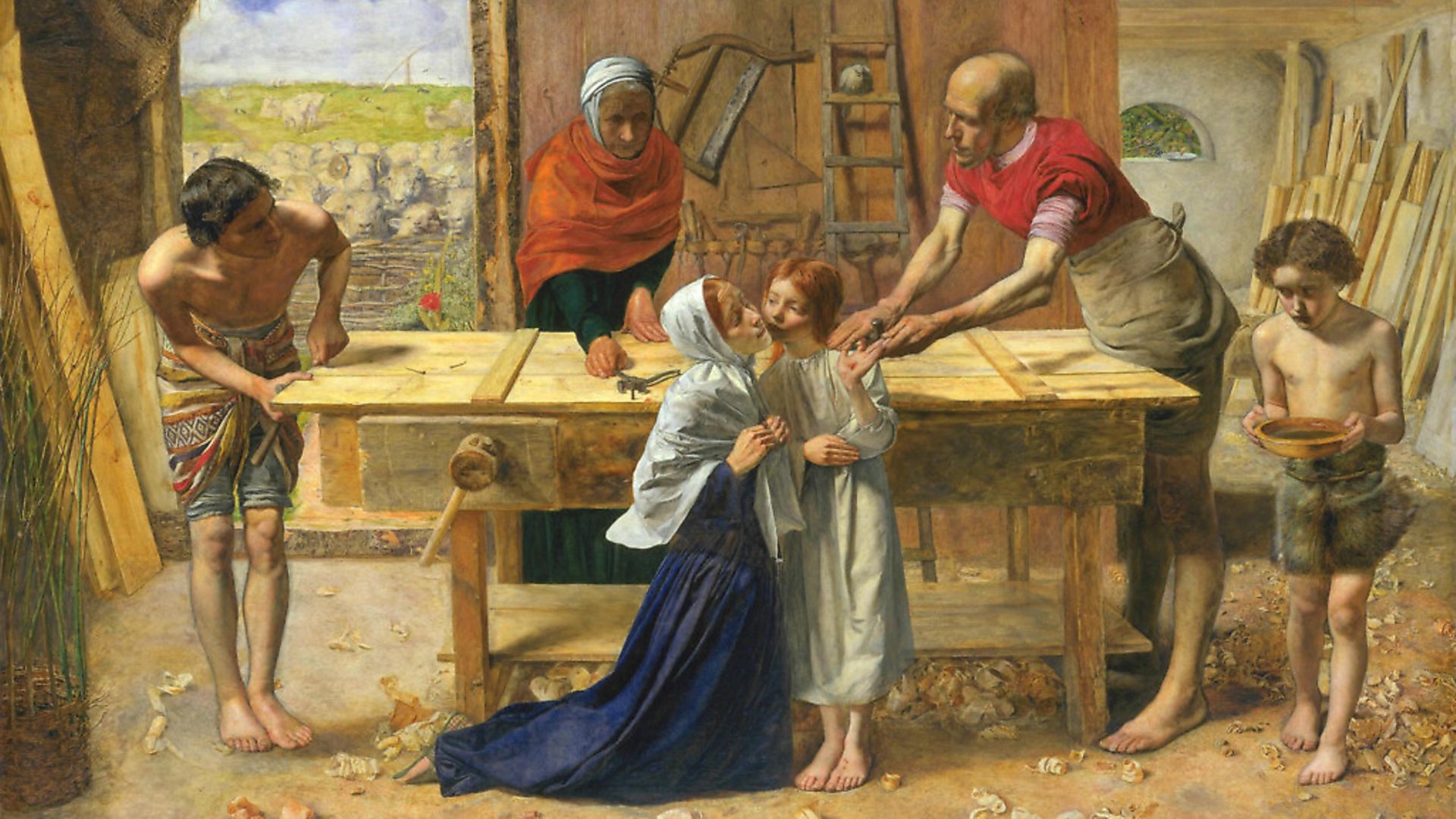
SOPHIA DEBOICK on a year in which music was helping to forge state identities on both sides of the Atlantic.
Capitalism, colonialism and immigration were transforming the world in 1850. The founding of shipment company American Express, by Henry Wells and William G. Fargo, and of the Lehman Brothers dry goods store, by Bavarian immigrants, indicated the thrusting business life of a still-young America. In the west, the Gold Rush was on. Los Angeles and San Francisco saw breakneck population growth and were incorporated as cities shortly before California became the 31st state.
The Irish Famine had seen a huge influx of immigrants into the US, changing the face of eastern port cities and later, the whole country. New British colonies were established in New Zealand and the transportation of convicts to western Australia began, while the presentation of Queen Victoria with the Koh-i-Noor diamond symbolised the era of the East India Company’s colonialism-by-proxy before the establishment of the British Raj later in the decade.
Romanticism was a reaction to this terrifying pace of change, and the movement had reached its peak by 1850. Wordsworth died and was succeeded as Poet Laureate by Tennyson, whose In Memoriam of that year gave birth to the immortal words “‘Tis better to have loved and lost/ Than never to have loved at all”.
Elizabeth Barrett Browning’s collection Sonnets from the Portuguese included the equally sentimental lines “How do I love thee? Let me count the ways”. Meanwhile, the Pre-Raphaelite Brotherhood were catapulted to notoriety by the unveiling of John Everett Millais’ Christ in the House of His Parents, shocking in its realism and condemned by Dickens, who said that Mary’s appearance was befitting of “the vilest cabaret in France, or the lowest gin-shop in England”.
The Romantics of the musical world, meanwhile, were dominant but suffering poor personal fortunes in this year, while on the popular stage songs of unsurpassed longevity were born, and music proved its key role in making national identities.
Wagner was in the doldrums in 1850. Having moved to Dresden in 1842, he rubbed shoulders with the city’s socialist nationalists, anarchists and assorted radicals and became actively involved in the May Uprising, one of the last events of the Revolutions of 1848, procuring hand grenades and manning the barricades.
He fled Germany when the uprising was put down and faced ostracisation and penury. In April 1850 he wrote from Paris to his future father-in-law, Franz Liszt, about his opera based on Lohengrin, the Arthurian romance of the Knight of the Swan, which had been the focus of three years’ work, but its premiere had been cancelled following the uprising. He implored: “Perform my Lohengrin! You are the only one to whom I could address this prayer.” Liszt was reluctant, but took the task on, and the premiere took place in Wagner’s absence on August 28, 1850 – the 101st anniversary of Goethe’s birth – as part of Weimar’s Goethe and Herder festival, at which Liszt also premiered his symphonic setting for Herder’s Prometheus.
The premiere of Lohengrin was a significant event during Wagner’s period of exile, but more importantly for musical history, it was the first time that one of Wagner’s best-known compositions was heard – the Bridal Chorus, from Act III. Yet, it had seemingly little impact at the time, the reviews were poor, and Wagner complained to Liszt that he had allowed the orchestra to drown out the singers because he wanted to make himself “the real hero of the performance”.
The rest of Wagner’s year was unedifying, from a failed adulterous elopement to writing his anti-Semitic essay Judaism in Music, in which he targeted Schumann, among others (Schumann debuted his only opera, Genoveva, that spring and went on to compose his last Symphony, No. 3, known as the Rhenish, later in the year). Wagner’s exile would continue until 1862 when King Ludwig II succeeded to the throne of Bavaria and became his patron. Bayreuth, Das Rheingold and the status of a legend of Germanic culture would follow.
There was no love lost between Chopin and Wagner, the German having called the Pole “a composer for one right hand”, but following Chopin’s death at the age of 39 in the autumn of 1849, he was undergoing a canonisation by his admirers. Chopin’s pupil and friend, Jane Stirling, was instrumental in this, buying up all his personal effects, including his Pleyel piano and his death mask, and establishing them in a makeshift museum at Calder House castle, near Edinburgh.
On the first anniversary of his death, in October 1850, she took charge of the unveiling of his grave monument at Père Lachaise cemetery, a sculpture of Euterpe, the muse of music, weeping over a lyre, and scattered a handful of Polish soil over the grave.
Early in the year, the composer’s heart had been returned to Poland from his adopted France, his eldest sister complying with his deathbed request and smuggling the heart, preserved in a crystal jar filled with cognac, past inspectors of the occupying imperial powers back into the country. Almost 30 years later, it was interred at Warsaw’s church of the Holy Cross, and it fast became a focus of devotion to a man who had already become a Polish national symbol.
For all the high-mindedness and drama of the Romantics, the popular stage was a force to be reckoned with at this time. In London, the entertainments at ‘song and supper rooms’ and taverns were developing into something grander as the first music halls opened – the Borough Music Hall in Southwark was already in existence and within 25 years there would be 375 music halls in Greater London.
In America, similar types of shows were booming and it was for these that Stephen Collins Foster wrote songs which penetrated the American psyche. Born on the 50th anniversary of Independence Day to a prominent Pittsburgh family, Foster was a self-taught musician influenced by the music of the city’s European immigrant populations.
A German-born jack-of-all-musical-trades, Henry Kleber, encouraged the young Foster’s talents, and by 1850 he had already written the wildly successful Oh! Susanna, with its beat derived from the European polka and a tune that became part of the DNA of Americana, beginning with its adoption as an anthem of the California Gold Rush. His sentimental parlour ballad of 1850, Ah! May the Red Rose Live Alway! – all butterflies, dew-drops and meadows – was successful but didn’t earn him much, and he turned to the more profitable business of writing for the stage.
Foster signed a contract with the prominent Christy Minstrels troupe and went on to write some of his most enduring songs for them. The blackface minstrel act was a mass popular entertainment but was highly politically-charged at a time when slavery was still legal in great swathes of the US and the ‘Compromise of 1850’ set of bills had tried but failed to diffuse tensions between slave and free states.
Foster was ambivalent about the abolitionist cause, but nevertheless felt that the minstrel song could be elevated to an art form concerned with universal human emotion, depicting its black subjects as dignified and sympathetic figures rather than comic grotesques. He wrote in a letter of February 1850 that he hoped “to encourage a taste for this style of music so cried down by opera mongers” – Foster was a champion of pop before the term even existed. His Camptown Races of 1850 had a nursery-rhyme simplicity – complete with a “Doo dah! Doo dah!” refrain – and while music critic John Sullivan Dwight wrote of Foster’s works “such and such a melody breaks out every now and then, like a morbid irritation of the skin”, there could be no greater accolade for a popular song than its sheer infectiousness. Camptown Races is a tune people all over the world can whistle and which instantly conjures up antebellum America.
The following year, Foster would write Old Folks At Home, otherwise known as Swanee River, a song that would inspire Gershwin’s Swanee nearly 70 years later and become synonymous with minstrelsy. The song would feature, along with Foster’s later composition My Old Kentucky Home, in Harriet Beecher Stowe’s anti-slavery novel Uncle Tom’s Cabin (1852). Foster was concerned with the issues of his time, but he became an immortal figure after his death at the age of 37 in a state of poverty after a freak accident in a grimy New York hotel room. Irving Berlin had a portrait of him on his wall, and while just two months after his death, Harper’s New Monthly Magazine wrote “the air is full of his melodies. They are our national music”, the same remains true more than 150 years later.
War would soon demarcate a new era. The American Civil War would lead to the abolition of slavery and create a new nation. The Crimean War would shift the European balance of power and lay the foundations for the conflict of 1914-18. But as Tennyson’s celebration of Crimea’s Charge of the Light Brigade showed, art would continue to do the work of crystallising nations’ sense of self.











